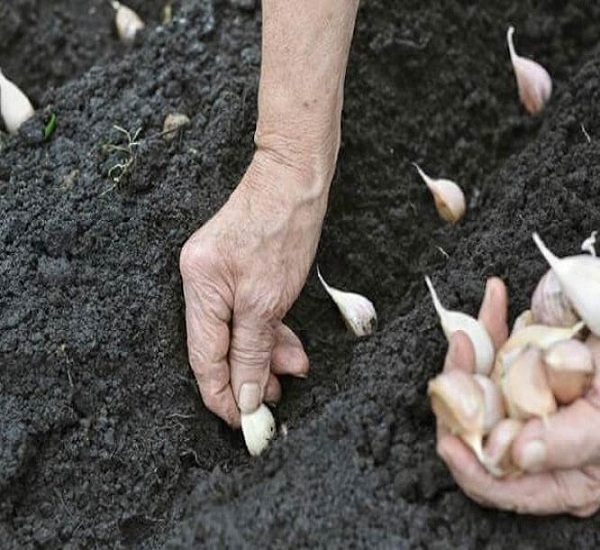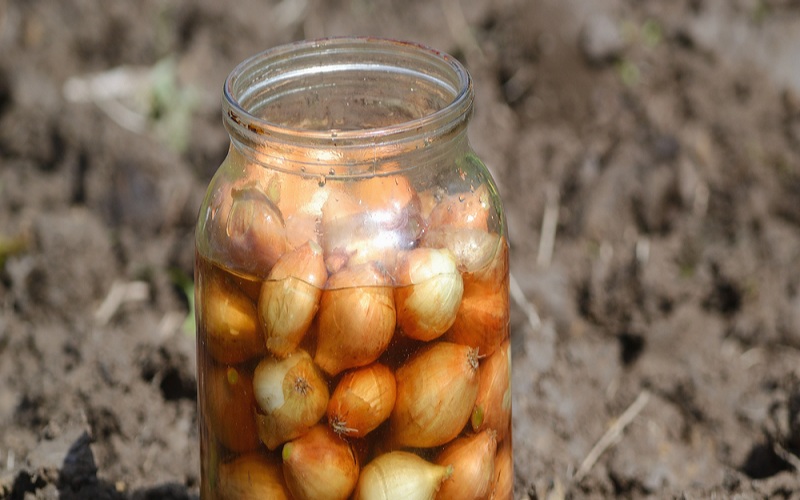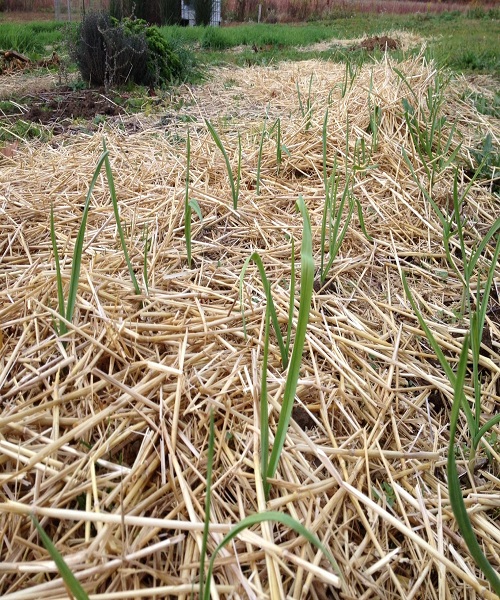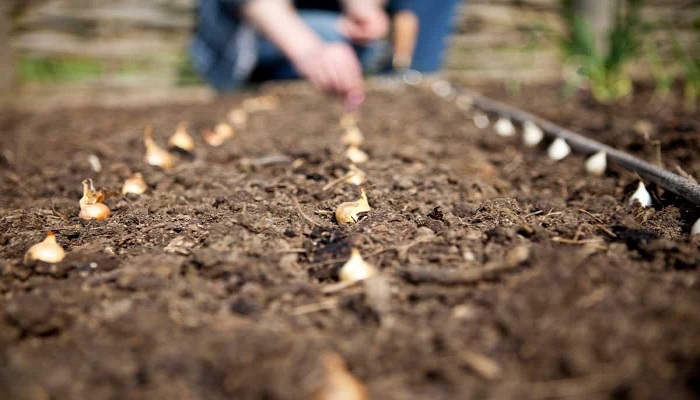For optimal results, plant your garlic and onions in the fall. It not only allows you to keep a piece of your garden productive during the winter months, but it can also produce an extraordinarily huge and wonderful crop of both veggies next year.
The following 5 secrets will help you get the most out of your fall planting of garlic and onion!
Plant at the Proper Time
Timing is crucial when planting fall crops such as garlic and onions. This implies planting the seeds for both veggies six to eight weeks before the first frost of winter.
Both crops need that full six-to-eight week growing period. It gives them time to establish themselves firmly before winter hibernation. In turn, solid root systems prepare plants for rapid early-spring growth. Then why not start planting earlier? For the same reason that both thrive in the crisp autumn air.
Both onion bulbs and garlic cloves can have problems germinating and thriving if planted too early in the summer. The best time to plant depends heavily on local weather conditions.

Prepare your bulbs ahead of time
Here’s a huge hint: plant your bulbs as soon as you can after purchasing them. In late summer and early fall, it may be difficult to find onion sets and garlic cloves for planting. Midway through the growing season, many garden centers and nurseries begin to reduce their offerings of plants and seeds.
However, your early-sprouting onion sets and garlic cloves. Plant seeds or store seeds in a cool, dry area until you’re ready to plant them. Planting onion sets in the fall instead of onion seeds will result in larger onions in the summer. Sets are also less delicate than young seedlings, making them easier to care for in bed areas.
When planting garlic, it’s important to use only high-quality seeds. If you’re going to plant bulbs of garlic from your own crop, pick the largest and healthiest-looking ones. You’ll improve your odds of success by doing this.
It is important to get organic, untreated garlic from a nursery or garden center if you intend to grow it.

Get Your Soil Ready
Both garlic and onions do best when planted in soil that is loose, fertile, and drains well. It permits the bulbs to expand in size and protects them from decaying in the sometimes too-wet conditions of late autumn and early spring.
Successful planting requires careful soil preparation in advance. To do this, put a lot of compost in the bottom of each planting furrow. The compost will give the bulbs the proper nutrients and enhanced drainage they require to flourish.
Plant garlic cloves at a depth of three inches and onions at a depth of two inches. Remember to always plant garlic cloves and onion bulbs with the pointed end facing up. This is where they will germinate, allowing for rapid ascent to the soil’s surface.
Create a planting row by digging a furrow in the dirt. After that, fill the trench with compost, about one inch’s worth. When the compost has been added, the bulbs should be planted at ground level into the compost. As the seed germinates and flourishes, it is bathed in a nutrient-rich environment.
Garlic and onions both do well when planted in rows or in a large, open area. The good news is they can be clustered closer than you might expect no matter how you plant them.
This proximity not only reduces the need for extra storage or upkeep but also helps conserve valuable growing areas.
Soak before you plant
One more essential step before planting in the fall is to soak your bulbs. Before being planted, the bulbs benefit from being submerged in water. And bulbs won’t grow if they don’t get enough water.
Especially in the late summer and early fall, when the ground is often fairly dry, this can be an important consideration. To soak, fill a 5-gallon bucket with water the night before planting, then toss in the bulbs.
A handful of tablespoons of pure baking soda is sometimes added to the water by certain gardeners. It is supposed to prevent insects and rot from damaging the bulbs and hasten the germination process. Bulbs can sprout in as little as a week after being simply soaked!
Soaking should only be done in distilled or untreated water. The capacity of bulbs to sprout is sometimes hindered by the chemicals found in city or processed water.

Make Sure to Mulch Your Plants
The best way to make sure your fall-planted onions or garlic grow well is to always keep a good layer of mulch over them. Mulch will not only keep the crops safe through the winter, but it will also discourage weed growth and retain soil moisture.
Put down a thin layer of mulch (about an inch) over the exposed soil just after you plant. Mulch materials such as straw, crushed leaves, and grass clippings all perform admirably. In a few weeks, when the crops sprout, you should continue to add more mulch. Mulch your crops to a depth of 4 to 6 inches before the cold weather of late fall and early winter sets in.
This will help keep your onion and garlic safe from the cold and wind this winter. When spring arrives, all you have to do is spread some new mulch over the top of the rows, and by early summer, you should have a bumper crop.


